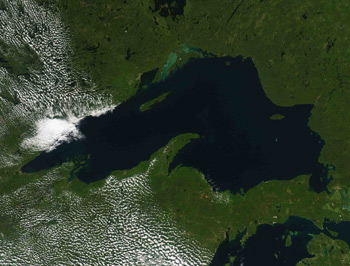Kalamazoo River spill: How much oil is 800,000 gallons?
|
Amid the media frenzy following the 800,000-gallon oil spill in the Kalamazoo River, some confusion is brewing over how much oil that is. Specifically, just how deep it would bury a football field. Reporter Tim Martin tried to contextualize the big spill this way Wednesday in an Associated Press article:
“An 800,000 gallon spill would be enough to fill 1-gallon jugs lined side by side for nearly 70 miles. It also could fill a wall-in football field including the end zones with a 14-foot-high pool of oil.” News outlets from Indiana to Los Angeles ran the AP article, and gossip blog Gawker plucked out that quote in particular.








